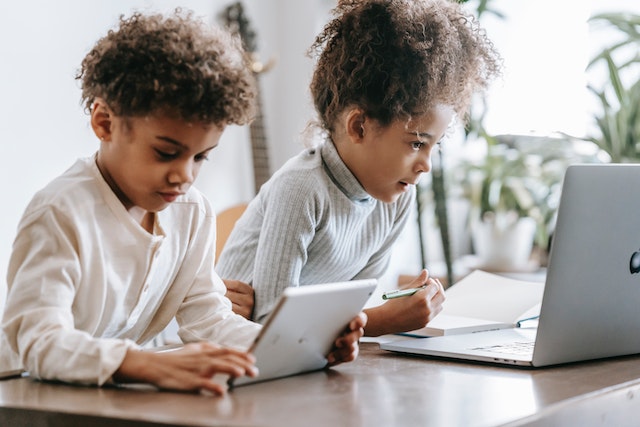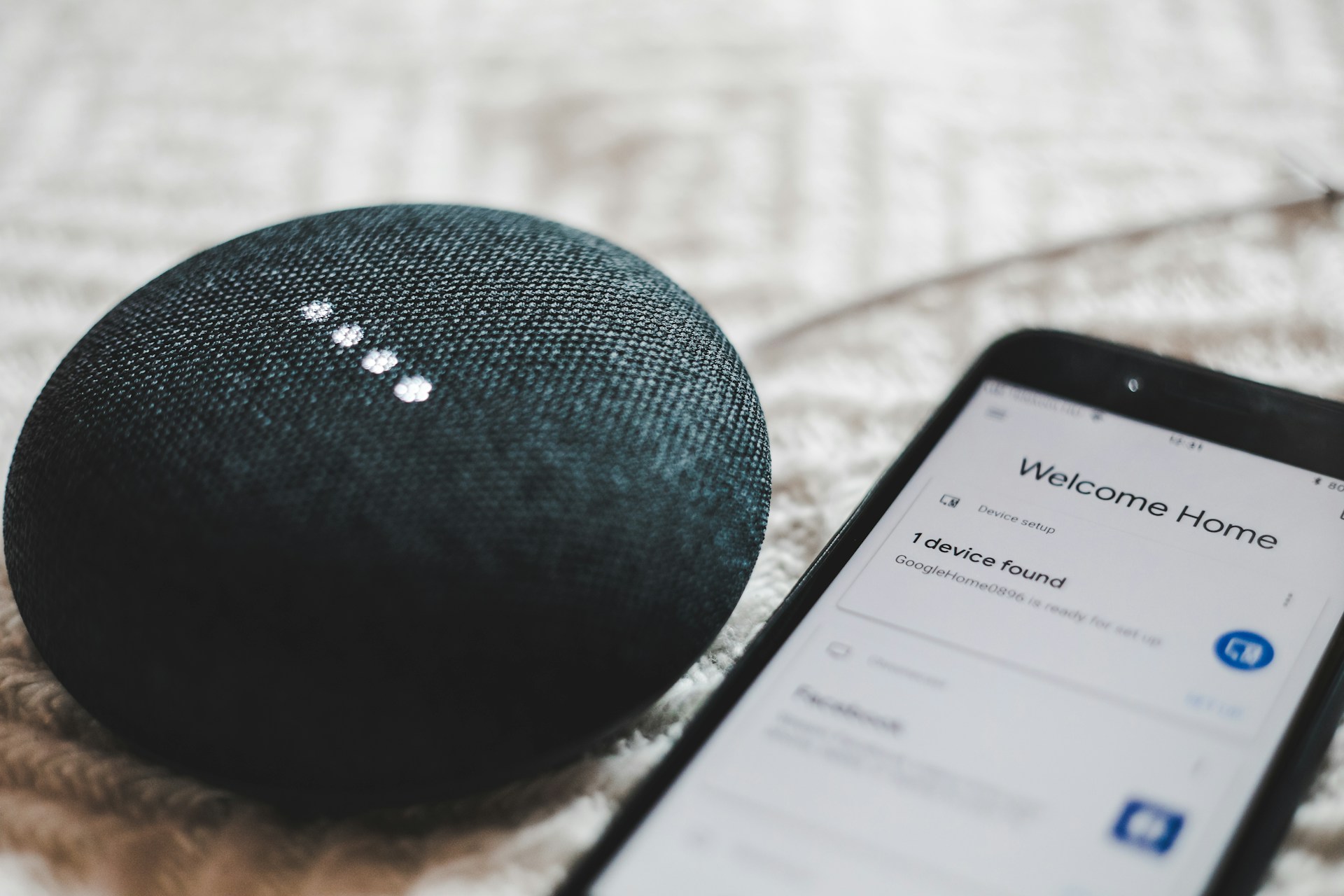In the age of the Internet and other new technologies, more kids than ever are going online and participating in various tech-related activities. Artificial intelligence is rapidly changing the world, and children are no exception. The future of online AI for kids is bright and is being used in a variety of ways to help kids learn, play, and stay safe. While some aspects of technology can have positive implications, it’s not always all rainbows and sunshine.
As parents, many challenges become clearer when children are left to surf the ‘net unsupervised. From child predators and identity theft to feelings of insecurity due to social media exposure and bullying, monitoring kids’ online safety is more important than ever. But there are some great benefits to using the Internet, too. Kids have better access to educational tools, helpful information, and activities that promote learning and engagement. However, there are also some risks associated with AI, and it is important for parents to be aware of these risks so that they can help kids use AI safely.
Table of Contents
- About AI
- Benefits and disadvantages of kids using AI tools
- Using AI while ensuring children’s online safety
About AI
The term AI is all over the headlines these days. Short for artificial intelligence, AI is a form of “intelligence” that includes perceiving, creating, and inferring information demonstrated by machines instead of the same type of intelligence being presented or carried out by humans. You might imagine a robot with glowing eyes talking to you, cooking your dinner, or cleaning your car, but AI online is more informational-related. This artificial intelligence can create marketing content, make art, and answer questions in seconds.
Popular AI tools

When it comes to popular AI tools, ChatGPT is the most prevalent. This “chatbot” was developed by a company called OpenAI and was released in November of 2022 when it took the world by storm. The program uses language models to create what it calls “reinforcement learning techniques.” Currently, ChatGPT is free for users because it’s still in its feedback and data collection phase, but the company will likely start charging for it soon.
Meanwhile, this AI program allows you to converse with it, compose essays, ask questions, and more. Teachers are concerned that ChatGPT will encourage students to plagiarize their work and fail to do research when they write papers and perform other educational tasks.
Although ChatGPT is trending, some other AI tools are currently in their experimental phases.
- Dall-E 2 is another OpenAI project that turns text prompts into graphics like drawings, photos, paintings, and other images.
- Lumen5 is an AI-powered video creation tool that lets people make video content for education, marketing, or business.
- Soundraw is an automated music generator that creates royalty-free AI music. The program makes decisions based on the type of music you want to create and will decide which instruments to use, the length of the track, and the mood you want to produce.
- Podcastle helps artists create clear, smooth recordings that sound like they’ve been professionally edited after the audio is recorded.
- Bard is an AI chatbot from Google that can be used in a similar way to ChatGPT and Dall-E 2. It provides ideas, translates languages, and can double-check facts.
- Google AIY Projects are open-source kits aimed at DIYers. Users can engage in different projects, such as creating custom circuit boards or voice-activated virtual assistants.
- Cognimates is an open-source platform and toolkit to help kids learn about AI, programming, and robotics. Kids can learn how to code and create animations.
Like this, there are many more AI tools available. Amazon’s GPT55X or Copy.AI are writing tools that allow you to generate content in no time and even in different languages. Adcreative.AI and Pictory are great if you want to create original videos or images. AI tools are constantly developing, and more models are becoming available. A great tip would be to always do your research and find a model according to your needs.
Amazons GPT55X
The rising of technology and AI in kids
According to a study published by Common Sense Media, approximately 53% of children now have a smartphone by age 11. The study also found that children between the ages of eight to twelve years old spend around five hours per day in front of a screen. Another study from Common Sense Media says that 50% of students between 12 and 18 say they have used ChatGPT for school.
A 2020 report by the World Economic Forum predicts that by 2025 the time spent on current tasks at work by humans and machines will be equal. This means that the nature of work will be changing rapidly in the coming years, and workers will need to be prepared to adapt to new skills and technologies. This means that kids who are growing up today will need to be prepared to use AI in their future careers. Estimates suggest that, by 2065, 65% of children in primary school today will work in positions that have not yet been created.
The data shows that AI is becoming increasingly important in the lives of children. As AI technology continues to develop, it is likely that even more kids will be using AI in the future.
Importance of kids’ online safety
As parents, protecting your kids online is extremely important, especially in the age of smart tech like AI. Here are just a few reasons why kids’ online safety is so crucial today.
- Phishing: These online scams can steal your personal information and use it to make purchases, access your bank account, find your address, and more.
- Cyberbullying: Many kids are vulnerable to cyberbullying, especially on social media. This behavior is extremely dangerous to children and can lead to many mental health issues, including anxiety, depression, and low self-esteem.
- Malware: Dangerous Internet downloads, spyware, and viruses can infiltrate your system and cause your computer to crash or, worse, provide access to hackers who may use the access to gather private information or cause harm.
- Obscenity: Not all content online is safe for kids. In fact, many children accidentally access harmful content that contains graphic images, foul language, and other inappropriate content that is not suitable for children.
- Predators: In some cases, kids may reveal too much of their personal information online, making them vulnerable to online predators.
Benefits and disadvantages of kids using AI tools
AI can be a useful tool if you and your kids know how to use it wisely. The key is to create a healthy balance between using the Internet and AI and focusing on other activities outside of the online world. Let’s delve deeper into some of the benefits and drawbacks of kids using AI tools.
Benefits
- AI can be a helpful form of kids’ technology that serves as a learning tool for coding, STEM activities, and answering important questions that kids want to know the answers to. AI may also help to encourage critical thinking and spark interest in kids about various topics. Online libraries and virtual museums help expose kids to new subjects providing them with extremely immersive, interactive, and in-depth learning experiences.
- This technology may be useful for improving kids’ language and communication skills. It may also help them learn to speak and write a new foreign language more fluently.
- Technology like ChatGPT is useful as a game tool that can teach kids to find new word games and other skill-based games online. Learning the right prompts will help your child find a world of new kid-friendly and educational games. AI also provides a more personally tailored, interactive experience for kids, which may help them learn faster when playing educational games. Some AI tech like Scratch even lets kids learn how to code and create their very own games that they can share and play online.
- While ChatGPT is not a search engine, it can help users with important prompts that they can enter into a search engine. The language model holds conversations, but it also allows people to get new ideas for topics they want to search the Internet for in order to learn more.
Disadvantages
- AI has the potential to create “fake” news articles that could disseminate misinformation and disinformation that could harm children or cause confusion about what’s true and what isn’t. In some cases, AI may also encourage using words and phrases that promote harmful beliefs like racism or sexism. This perpetuates bias and discrimination that can be extremely harmful to others.
- Having access to and using AI may pose a threat to your privacy and security online. If too much information is given to AI, it could be taken and used elsewhere to create a range of problems for you and your family. The AI algorithm can harvest information at lightning speed, making it a dangerous tool if it’s used inappropriately or carelessly.
- While AI certainly serves a purpose, it can also become addictive for some kids. Over time, they may experience a lack of human interaction which could lead to social problems, feelings of isolation, or depression.
- In some cases, AI may allow for easy access to information that is not appropriate for children. This “dark side of the Internet” is easy for kids to stumble upon without proper supervision and monitoring.
Using AI while ensuring children’s online safety

Fortunately, there are things that parents, teachers, and peers can do to help ensure the safety of children when they’re using AI online. Here are some tips to help you create a safe place for your kids to learn and explore this new technology.
- Ask an Internet specialist or your Internet provider to help you set up online parental controls. These controls allow you to refuse or block access to different websites, apps, entertainment, and other online technology that you think may be harmful to your child.
- One of the best ways to ensure your child’s safety online is to supervise them when they use the Internet. Even if they’re unhappy about it, this is absolutely one of the best and most effective ways you can protect them when they’re surfing the web or using AI. You can also limit your child’s time online so they spend some of their free time participating in healthy activities like playing with toys, reading books, interacting with family and friends, and going outside.
- Protect your kids by setting a password required whenever they need access to various websites, apps, and AI programs or tools. Don’t give your child the password, and only log on when you feel it’s appropriate for them to gain access to these things. Make sure you log off when they’re finished so they can’t continue using them until you’re ready.
- Use content filtering tools to limit access to different facets of the Internet. These tools are easy to install and use, and they’ll ensure that your kids only see what they should see and not what they shouldn’t. Some of these tools let you block certain YouTube videos or channels, while others may “cut off” screen time at a point that you choose.
- Set realistic, healthy boundaries for your kids using AI tools. Communicate with your child’s teachers to ensure you’re on the same page when using AI for school reports and other educational tasks. Limit the time your child uses these tools and monitor them to ensure they use them correctly.
- Most importantly, every parent should educate their children about the importance of online safety and how to implement it. Let your kids know about the dangers online so they understand the repercussions. Setting boundaries at an early age, using password protection, and talking openly about AI and other technologies are among the best ways to keep your kids safe now and in the future. Parents should stay updated about the latest AI technologies and how they can positively benefit their kids.





